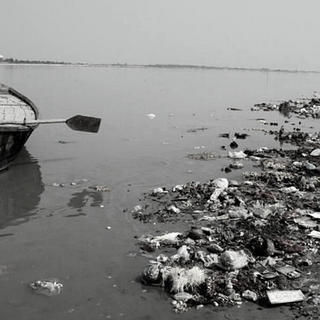Wildfires are becoming increasingly common in regions previously not at-risk for flames, suggests an analysis of 20 years’ worth of data by The Guardian. Climate change, which is drying out forests and wetlands to the point of kindling, and the development of grasslands for agricultural or urban use, are responsible for the changed pattern of wildfires, experts say.
“Since the early 2000s, we are seeing a decline in grassland fires, which dominate the global numbers. At the same time, there is an increase in some high-fuel systems such as the western U.S. that several studies have connected to climate change,” Niels Andela, an expert in remote sensing for environmental research and lecturer at Cardiff University, told The Guardian. “This trend is not yet visible everywhere, but it is likely to become more apparent in other parts of the world.”
Grasslands, or savannahs, and their indigenous flora and fauna are uniquely suited to reviving and thriving after wildfires. A 2018 study of African savannahs found 30% more diverse mammal communities and 40% more diverse bird communities in the areas most affected by fire. Some savannah animals, in fact, have evolved to only reproduce in recently burned grass. And within a year of a savannah fire, the grass regrowth will absorb most of the carbon dioxide released into the atmosphere from the fire, making the fire-prone ecosystem carbon neutral.
It’s very different in forests and wetlands. When these ecosystems are dry enough to catch fire, as they increasingly are, the plant and animal life, as well as the carbon balance, can take decades to recover. Increasingly victim to climate change-driven droughts and heatwaves, these are the areas where wildfires are becoming increasingly common.
Related on The Swaddle:
The Amazon Wildfires Are a Product of Environmental Racism
While the total acreage going up in flames worldwide has remained relatively constant, the change in ecosystem hit by wildfires is concerning. While regions like the Amazon are newly burning, Australia and California have always been prone to wildfires. But in Australia over the past 10 years, The Guardian found, fires are increasingly cropping up in the country’s forested southeast, an expansion from where they typically concentrated in the north. In California, the opposite has happened; fires have shifted northward over the past 10 years.
Similarly, the Amazon fires of 2019 were far more extensive than any previously — perhaps because the climate of the ecosystem itself has changed. “In around 40% of the Amazon, the rainfall is now at a level where the forest could exist in either state — rainforest or savannah, according to our findings,” said the lead author of a 2020 study.
Changing wildfire patterns are evidence that the world’s climates have already changed — in a potentially devastating and self-perpetuating way. As fires spread to ecosystems unsuited to recovering and reabsorbing the carbon dioxide produced, more carbon dioxide will enter the atmosphere and cause the world to warm — and previously wet and cool climates will become tinder.




